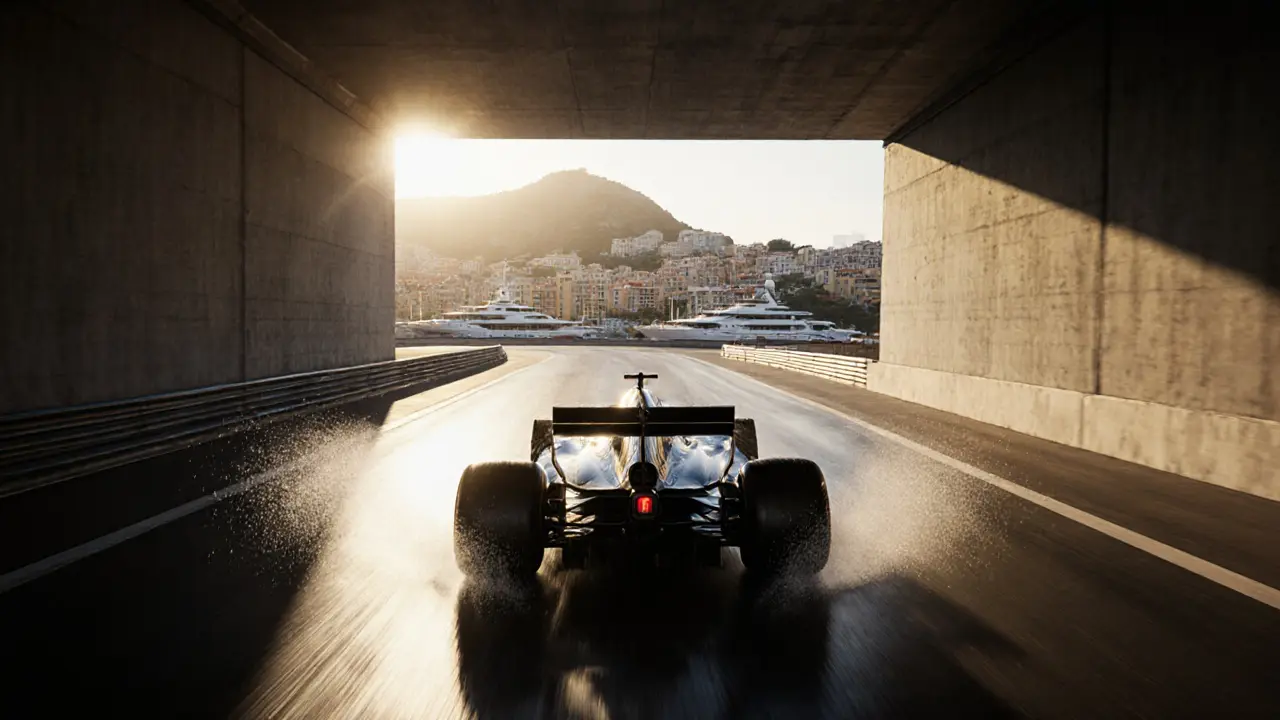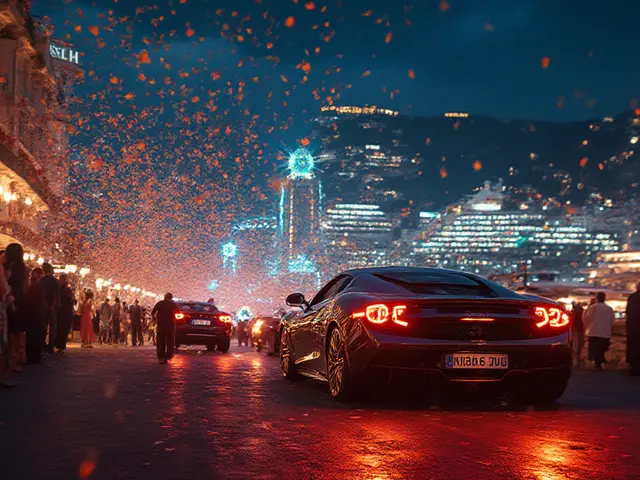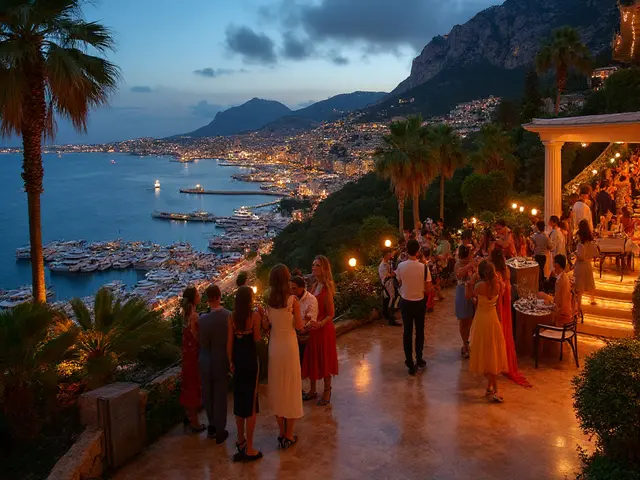The Monaco Grand Prix isn’t just a race. It’s the only time a city turns into a racetrack-and the only time the world stops to watch.
The Track That Doesn’t Let You Breathe
The Circuit de Monaco is 3.337 kilometers of pure tension. No other F1 track has 19 turns in less than two miles. No other track forces drivers to hug walls so close their mirrors scrape concrete. The tunnel? It’s not just a dark passage-it’s a psychological trap. One second you’re blinded by sunlight, the next you’re in pitch black, braking from 300 km/h into Sainte-Dévote. One mistake, and your season ends in a wall of luxury hotels.
Drivers call it the ultimate test of nerve. Not because it’s the fastest, but because it’s the least forgiving. In Silverstone, you can recover from a slide. In Monaco, you can’t. There’s no runoff. No grass. Just marble, glass, and a 100-foot drop into the harbor if you misjudge the exit of Tabac.
More Than Just Cars
The Monaco Grand Prix isn’t about lap times alone. It’s about who’s watching. The paddock is a gallery of billionaires, movie stars, and royalty. You’ll spot the same faces year after year: the Sultan of Brunei in his private suite, the CEO of a tech unicorn on the terrace of the Fairmont, a Hollywood actress sipping champagne as the cars fly past the Casino Square.
It’s not a race. It’s a social event with engines. The FIA doesn’t just sanction this event-it enables it. Because without the glamour, the race loses half its value. The cars are fast. The people are richer.
History That Still Breathes
The first Monaco Grand Prix was held in 1929. Back then, the track was made of cobblestones. The cars weighed less than a modern SUV. Drivers wore leather caps, not helmets. The winner, William Grover-Williams, drove a Bugatti Type 35B and earned the equivalent of $1,500 today. The prize? A trophy and a handshake.
Today, the winner takes home over $7 million. But the spirit hasn’t changed. The same narrow streets, the same hairpins, the same sea breeze rolling off the Mediterranean. The track hasn’t been widened. It hasn’t been smoothed. It hasn’t been modernized. It’s been preserved. Like a vintage watch, every gear still turns exactly as it did a century ago.
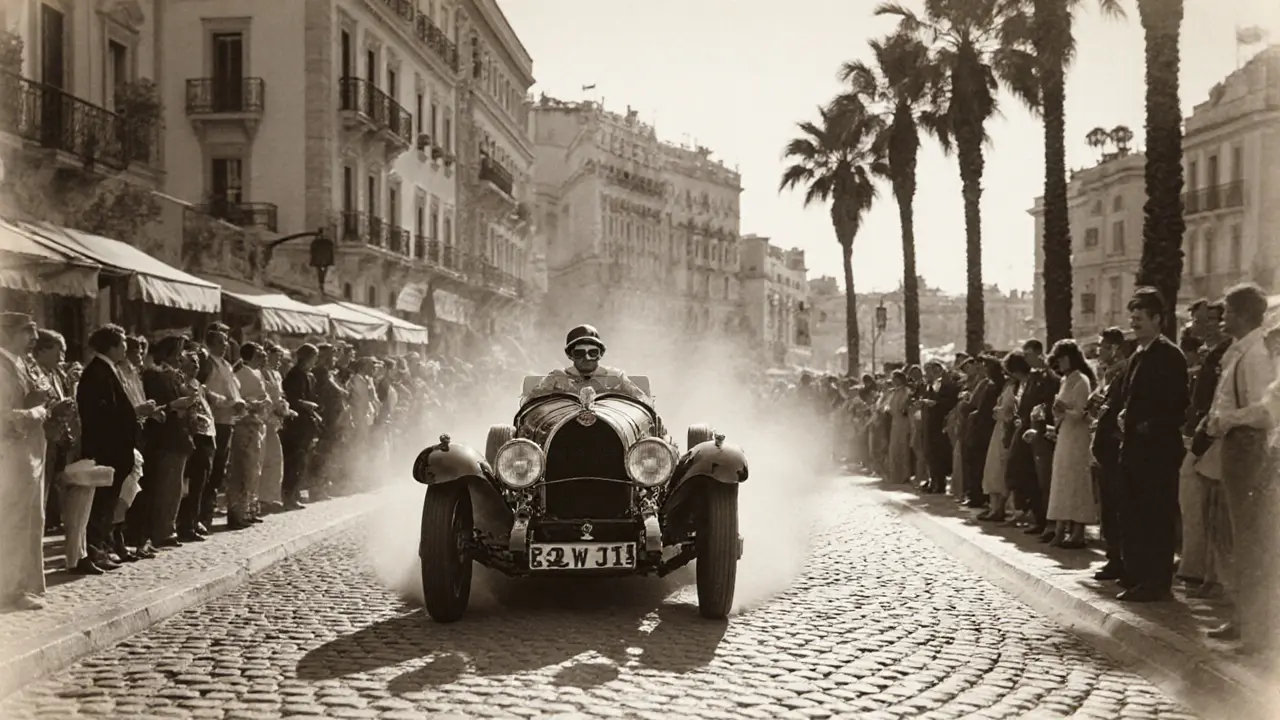
Why It’s the Hardest Win in F1
Winning in Monaco isn’t about having the fastest car. It’s about having the cleanest race. Pole position here is worth more than anywhere else. Over 70% of races since 1950 have been won by the driver who started first. Why? Because overtaking is nearly impossible. The average number of passes per race? Less than five.
Teams spend weeks studying telemetry from previous years. They map every bump, every change in grip, every shadow the tunnel casts at 3:15 p.m. on race day. The difference between first and third can be a fraction of a second in the swimming pool chicane. That’s why the best drivers in the world-Senna, Prost, Schumacher, Hamilton-all say Monaco is the one race they’d win even if their car was the slowest on the grid.
The Rain Factor
Monaco doesn’t just test skill. It tests luck. Rain happens. And when it does, chaos takes over. In 1984, Ayrton Senna drove a Toleman, a car with half the power of the leaders. But it was dry when he started. By lap 15, the track was soaked. He didn’t have the speed. But he had the control. He passed six cars in the rain, in the dark, on a track no one else dared push. He won. That race didn’t just make him a legend. It rewrote how people think about wet-weather driving.
Today, teams still study that race. They know: in Monaco, conditions change faster than strategy. A single drop can turn a podium chance into a crash. That’s why pit stops here aren’t just about tires-they’re about timing, intuition, and courage.
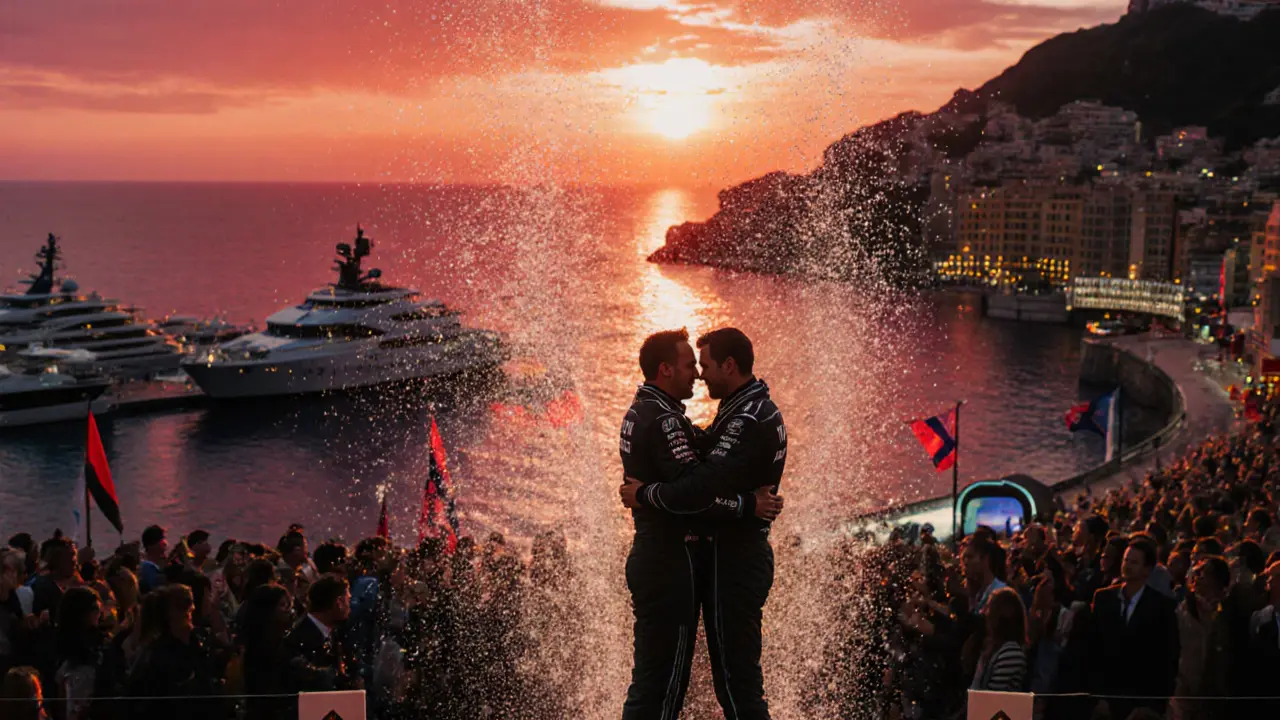
The Money Behind the Curtain
Prize money is only part of the story. The real value of the Monaco Grand Prix is in exposure. A single broadcast minute here is worth more than any other F1 race. Brands pay up to $50 million just to be seen on the pit wall. Rolex doesn’t sponsor the race-they *own* it. Their logo is on every timing screen, every podium, every driver’s watch. The Prince of Monaco doesn’t need the money. He needs the prestige.
Hotels charge $5,000 a night during race weekend. A single balcony seat overlooking the harbor goes for $150,000. The entire event generates over $120 million in direct economic impact. But none of that matters to the fans. They come for the cars. For the danger. For the history.
What Makes It Irreplaceable
Could you build a Monaco-style track elsewhere? Technically, yes. But would you? Imagine trying to close down the streets of downtown Dubai or New York for a weekend. The cost. The chaos. The lawsuits. Monaco doesn’t just host a race. It *is* the race.
No other country would allow a Formula 1 car to scream past a five-star hotel, a yacht dock, and a casino all in under 90 seconds. No other city would let its citizens turn their balconies into VIP boxes. No other place blends speed, elegance, and risk so perfectly.
That’s why, even as F1 races in Las Vegas, Saudi Arabia, and Miami, Monaco remains the crown jewel. The others are spectacles. Monaco is a ritual.
What to Watch For in 2026
This year, the cars are faster, the tires are tougher, and the teams are smarter. But the track? Still the same. Still cruel. Still beautiful.
Watch the first lap. That’s where legends are made-or broken. Watch the tunnel. Watch the hairpin after the tunnel. Watch how the leaders brake three meters later than everyone else. Watch the crowd. Watch the champagne spray. Watch how the sun hits the sea just as the cars cross the finish line.
That’s not just racing. That’s poetry in motion.
Why is the Monaco Grand Prix considered the most prestigious race in Formula 1?
It’s the only F1 race held on public city streets, with no runoff areas, tight corners, and zero room for error. Winning here requires precision, nerve, and perfect timing-not just speed. It’s also the oldest race on the calendar, dating back to 1929, and attracts the world’s elite, making it as much a social event as a sporting one.
Has anyone ever won the Monaco Grand Prix from a position other than pole?
Yes, but it’s rare. Only about 30% of Monaco races since 1950 have been won by someone who didn’t start first. The last driver to win from outside the top two was Jenson Button in 2009, starting third. Most wins come from pole because overtaking is nearly impossible on the narrow track.
How much does it cost to attend the Monaco Grand Prix?
Ticket prices vary widely. General admission starts at around €100 for standing areas, but a balcony seat overlooking the harbor can cost up to $150,000. Accommodation during race weekend often exceeds $5,000 per night. Many fans book a year in advance just to secure a spot.
Why is overtaking so difficult in Monaco?
The track is only 3.3 kilometers long with 19 turns, most of them tight corners or chicanes. Walls line the entire circuit, leaving no room for error. Even with modern aerodynamics, the narrow layout and lack of long straights make it nearly impossible to get a clean run on the car ahead. Most passes happen only in the first lap or during rain.
What makes the tunnel section so dangerous?
The tunnel is a 180-meter-long concrete passage that suddenly plunges drivers from bright sunlight into complete darkness. The eyes take seconds to adjust, and the car’s aerodynamics shift dramatically as it exits. Drivers brake blind, often at over 300 km/h, into the first corner after the tunnel. One misjudged brake point can send a car into the wall-or worse, into the harbor.
Is the Monaco Grand Prix still relevant in today’s F1?
Absolutely. While new street circuits like Las Vegas and Miami offer flash and spectacle, Monaco delivers history, danger, and prestige that can’t be replicated. It’s the only race where drivers say, "If I win here, I’ve won everything." It’s not about the money or the crowds-it’s about legacy.

